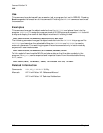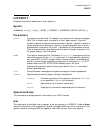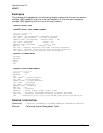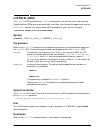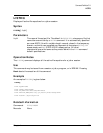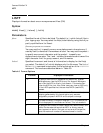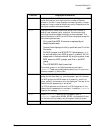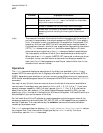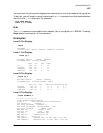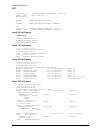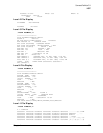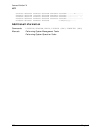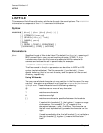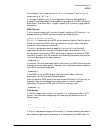
326 Chapter 4
Command Definition F-K
LISTF
listfile The name of the output file to which the file information will be written. If
you omit this parameter, the output appears on $STDLIST. If you specify
listfile, the output is sent to a temporary file created for this purpose. The
temporary file is a new ASCII file with variable length records, closed in
the temporary domain, and with user supplied carriage control characters
(CCTL), OUT access mode, and EXC (exclusive access) option. All other
characteristics are identical to the FILE command default specifications.
You may specify a different kind of file or backreference an existing file.
When you direct LISTF output to $STDLIST from a job, or when you direct
the output to any non-disk device, a date and time stamp preceeds the
data, and listlevel 0 data appears as one file per record rather than in the
standard multi-column format.
Operation
The LISTF command displays a description of the file(s) you specified in fileset. It only
accepts MPE file name syntax, but it displays information in one of two formats, MPE or
POSIX, depending upon whether or not your current group differs from your logon group.
MPE format examples appear below. For examples of the POSIX format, see the LISTFILE
command.
You may list any file, but there are restrictions on the kinds of information available to
various users. A standard user may specify a listlevel of 0, 1, 2, 3, 4, 5, 6 or 7. If you have
account manager capability (AM), you may request listlevel -1, -3 or -5, 8, 9 information
about files in your own account. If you have System Manager capability (SM), you can
specify any listlevel to view all information for all files on the system. List levels 8 and 9 are
also available if you are the owner of the files.
For list levels 8 and 9 the IP address of remote accessors and the program name of the
accessor process are restricted fields. PM, SM, OP, NA, or NM capabilities are needed to
see the IP address. The rules defined by the SHOWPROC command are enforced before
revealing the process name.
The LISTF command does not display #SEG, STACK, MAXDATA, TOTAL, DB, DL or CAP values
for program files. That information is displayed by the VERSION utility. For more
information, see the VERSION command.
7 Shows all file specific data in LISTFILE,5 type format, but
does not show LISTFILE,3 data. If a file has no unique data,
only the file name is displayed.
8 Shows all accessors of the files listed. Restrictions apply
9 Shows level 8 information and details about processes
accessing the files including file locking data. Restrictions
apply.
Listlevel Displayed Information



